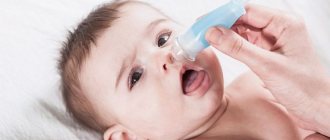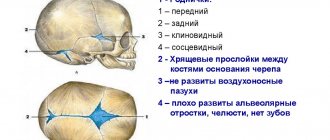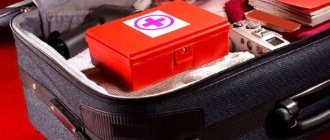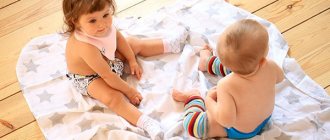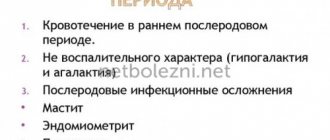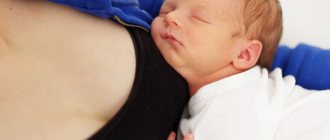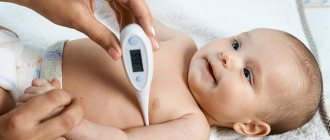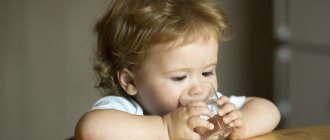Products for baby hygiene.
All baby care products must be of high quality, have a good, as natural composition as possible, and be specially designed for children. In this list item we include:
- Cotton buds and cotton pads. They will be needed from the birth of the child, for example, to treat the umbilical wound. It is better to have two different types of cotton swabs: regular and with a limiter, which are used for cleaning ears. You can also buy regular cotton wool if you plan to clean your baby’s nose with cotton wool.
- Means for disinfecting the umbilical wound (hydrogen peroxide solution 3%, brilliant green (can be replaced with an alcohol solution of chlorophyllipt).
- Baby diaper cream. It will be needed for application under a diaper to prevent diaper rash and irritation, and to protect delicate skin from inflammation.
- Massage Oil. At first, the entire “massage” consists of gentle stroking of the baby by mom and dad, but even in this case it is more pleasant to use massage oil. If later you start giving your child a professional massage, the specialist will also use oil for this.
- Baby bathing product/bathing gel.
- Children's brush/comb with special soft bristles that do not injure the baby's delicate skin.
First aid kit for home
A home baby first aid kit includes a complete list of hygiene products, tools, and medicines that a caring mother prepares for her baby even before his birth. Forming such “baggage” is not a matter of one day, or even a week. All products can be purchased gradually until the birth of a newborn.
First aid kit for a newborn: umbilical wound care products
To treat the umbilical wound you will need:
- 3% hydrogen peroxide (initially choose bottles with a built-in pipette - they are much more convenient to use);
- cotton pads;
- cotton buds;
- traditional brilliant green (or instead of brilliant green, you can use effective, but not skin-staining, bactericidal agents - calendula tincture or eucalyptus tincture);
- a pipette with a round end (in case you come across an “outdated” bottle of hydrogen peroxide).
We will devote a separate material to the treatment of the umbilical wound, but here let us remind ourselves: complete healing of the umbilical wound takes about 10-15 days. And if, with proper and regular care of the newborn’s navel, two weeks after his birth, the discharge from the wound has not stopped, you should immediately inform the pediatrician about this.
First aid kit for newborns and infants: remedies for colic and gas formation
In parental language, “tummy problems,” among which the most “popular” are colic in newborns and increased gas production in infants, have cost more than one generation of parents a lot of nerves. However, in our time, this problem is completely solvable - the first aid kit for a newborn should definitely include drugs that can relieve the baby from painful symptoms and discomfort. For example:
- dill water (you can make it yourself from fennel fruits, or you can buy a ready-made form at the pharmacy, such as BabyCalm);
- a gas outlet tube (preferably with a limiter so that you don’t accidentally push it too deep);
- microenemas like Microlax;
- medicines for flatulence (for example: Espumisan, Simethicone, Plantex and others);
- homeopathic suppositories Viburkol;
- special glycerin suppositories for newborns that stimulate peristalsis (for example, Glycelax);
- belly warmer (the smallest one);
- Bifidumbacterin or another drug based on live lactobacilli (however, this drug should be used strictly as prescribed by a doctor and only if dysbacteriosis is suspected);
- Activated carbon in capsules, Polysorb or any other enterosorbent on the advice of your pediatrician - their presence in the first aid kit for a newborn is desirable, since these drugs will help not only with colic and flatulence, but also with the appearance of food allergies or diathesis.
Non-lyrical digression No. 1: about constipation in infants
If your baby is breastfed, and at the same time you are worried that he poops suspiciously little and rarely (once every few days), then in most cases all your fears are in vain. And your baby doesn’t need any help in the form of candles, straws or syrups! On the contrary, praise yourself, you are a wonderful, responsible and reasonable mother who feeds her child an excellent product: it is almost completely digestible without “waste”.
We recommend reading: How to choose a baby bath for a newborn: bathing in a folding one with a stand
However, this situation should be considered normal only if the child does not show any signs of painful anxiety and discomfort. In other words: if the baby is fine, but at the same time, relatively speaking, you find nothing in his diaper for the fifth day in a row, there is no reason to sound the alarm. But if the baby does not poop and at the same time behaves restlessly, eats poorly, cries a lot - this is definitely a signal that outside help is needed.
Here is what the well-known doctor Komarovsky advises regarding constipation in infants:
An interesting fact: medical science, with a huge amount of various research on infant colic, still cannot confidently describe the nature of its occurrence. Moreover, in recent years, the world's pediatricians are increasingly inclined to believe that colic in newborns and infants aged 0 to 3 months is a physiological norm that accompanies the process of formation and establishment of such a complex system as the gastrointestinal tract.
From the outside, infant colic looks like this: at first the baby is calm and serene. Then, as if on cue, he begins to cry and scream so that the parent’s heart is one step away from breaking. And suddenly, after a couple of hours, again as if on cue, the baby returns back to a great mood. It is important to understand that infant colic is not scary, it is not a disease, and it is a process that most often begins and ends on its own.
The venerable Doctor Komarovsky, already mentioned by us, advises in the event of infant colic... to have courage and be patient, limiting your intervention to only a gentle massage of the abdomen (with your fingers, lightly move the baby’s tummy clockwise). However, if you, a tender and affectionate parent, cannot bear the pain of an infant, give your baby some medicine (Espumizan, dill water, etc.), which will most likely ease the pain somewhat and shorten the duration of the colic.
Normally, infant colic should stop “bothering” babies (directly) and their parents (indirectly) by the time the child reaches 3 months of age.
First aid kit for newborns and babies up to one year: allergy remedies
Allergy attacks experienced by children under 2 years of age, including newborns and infants, in most cases represent the body’s reaction to a particular food product that enters the baby’s body with mother’s milk or as part of a mixture.
Alas, trying to identify an allergen using allergy tests in children under 3 years of age is an almost useless exercise. At the same time, any doctor will confirm to you that the most reliable remedy for allergies is the fastest “separation” of the body and the allergen. In the case of small children - newborns and infants up to one year old - this means: stop feeding (not forever! but only for a few hours) and give an antihistamine strictly in the dosage for newborns and infants.
With newborns (the scientific standard refers to only children from the moment of birth to 28 days) the situation is the most difficult; they cannot be given antiallergic drugs orally. To eliminate redness and rashes, you can use soft gels and ointments (for example, Fenistil gel), which are best applied not directly to the skin, but on top of a thin layer of baby cream.
Starting from 1 month, you can use antihistamines in the form of drops or powder (crushed tablets). Your pediatrician will tell you what kind of medications they will be, since the individual characteristics of each baby are strictly taken into account when selecting them.
First aid kit for a newborn: remedies for fever and colds
Many pediatricians are of the opinion that in the first months of life, a child’s elevated temperature is a kind of norm and should not be brought down. However, here it is necessary to clarify what exactly the temperature is and to what extent the taboo on the use of antipyretic drugs extends.
Most doctors advise: you should not lower the temperature of a newborn and an infant up to one year old, if it does not exceed 38.5 degrees. The fact is that temperature is not so much a symptom of a disease as an indicator of the body’s protective reaction. At elevated temperatures, many viruses and bacteria die. Accordingly, by knocking it down, you interfere with the natural process of the baby’s body fighting infection.
The exception is infants who have experienced symptoms of seizures at elevated temperatures. Such babies should lower their temperature as soon as the first cramp appears, after which the most reasonable step is to immediately call a doctor.
What is useful to have in a first aid kit for a newborn or infant against fever and colds:
- thermometer for measuring body temperature: there are special, safe thermometers for infants (for example, a nipple thermometer or a strip thermometer that can be glued to the baby’s skin);
- antipyretic agent in the form of rectal suppositories (for example, Viburkol, Tsefekon D or similar);
- means to relieve nasal congestion (drops like Aquamiris; Nazol Baby, Nazivin, Otrivin, Marimer and others, but always in a format for newborns or babies up to one year);
Group of remedies for intestinal colic
Cases where an infant has never experienced colic are very rare, so the mother should use the following list in her newborn’s first aid kit:
- Gas outlet pipe. It will help air bubbles exit the baby’s body more easily during flatulence.
- Medicines that bind to air bubbles in the intestines and painlessly remove them. Such drugs contain simethicone - this can be Espumisan L for newborns or Infacol.
- Fennel or dill seeds. From these you can prepare a homemade solution for toddlers, which will improve the passage of gases in the baby. Instead of fennel seeds, you can use the pharmaceutical drug Plantex.
- Small heating pad. For easy passage of gases, you need heat, so you can apply a heating pad to the baby’s tummy (more details in the article: how to use a salt heating pad for newborns?).
We recommend reading: What is tubing for skating, how is it different from a cheesecake?
A group of remedies for constipation or diarrhea
It will be happiness if the little one does not experience any intestinal problems. But just in case, it is better to buy the following medications:
- Glycerin suppositories. They help with constipation in toddlers, but they can be used no more than once every three days.
- Syringe. You can give your baby an enema with a small syringe in case of constipation, but we must not forget that an enema reduces the amount of beneficial microflora in the intestines. There is no need to use it often.
- Remedies for diarrhea: Linex or Smecta. If you have diarrhea, you should seek medical help as soon as possible after taking the medicine. In young children, diarrhea can lead to dehydration.
If flatulence or colic is a frequent occurrence, it is better to consult a pediatrician. Constantly feeding a child with medications is a bad option, since their excess is toxic to a fragile body.
Cold remedies group
It’s great if parents manage to do without the following devices and medications, but you should still buy them:
- Aspirator for a newborn (more details in the article: how to use an aspirator for newborns correctly?). When a baby has a runny nose, mucus collects in his nose, which he does not yet know how to blow out. A nasal aspirator will help remove it. Outwardly, it looks like a small syringe with a special tip; there are mechanical and electronic aspirators.
- Saline solution or salt water. They are used to rinse the nose so that the mucus comes out easily.
- Vasoconstrictor drops. They can be purchased in advance, but should be used only with the permission of the treating pediatrician.
- Antipyretics. For infants, they are based on paracetamol and ibuprofen, they are allowed from the age of three months. It is necessary to have antipyretics in a child's first aid kit, as they can help if the baby's temperature rises at night. Now you can buy antipyretic in suppositories, sachets, or in the form of a suspension.
- Homeopathic suppositories – Viburkol. These suppositories increase the body's defenses against infection and help reduce high fever.
Other means
It is better for parents to purchase both what will be needed in the near future and what will be useful a little later:
- Thermometer. A thermometer is necessary not only for sick little ones, but also for healthy ones. It helps control the baby's temperature. It is better not to use a mercury thermometer; instead, you can purchase a safe electronic one. The price, of course, will be higher, but the measurement accuracy will also be higher, and it will be used for many years. You need to remember that you need to measure the temperature within 3-5 minutes after the sound signal of the electronic thermometer. Now strips for measuring temperature (they are simply applied to the baby’s forehead) and models of thermometers in the form of a pacifier are becoming popular.
- Dentol gel or Bebident drops. These remedies relieve teething pain.
- Antihistamine - for example, Fenistil. It will help if the baby has been bitten by a mosquito or is allergic to a new complementary food. Fenistil drops are used for up to a year, and after that you can use the gel of the same name.
Care products
In addition to hygiene products and children's cosmetics, special accessories and devices will be required to care for your child:
- Special children's scissors with rounded tips - for safe use.
- Children's thermometer for measuring temperature. The best option for a baby would be a non-contact infrared thermometer, which measures temperatures quickly (just a few seconds) and is comfortable for the child. This device can easily measure the temperature of a sleeping baby without the risk of waking him up.
- Indicator for monitoring temperature in constant mode. This additional device to a regular non-contact thermometer will help parents in the event of a child’s illness, when it is necessary to constantly monitor the temperature measurement: parents will be able to quickly respond to a significant increase in values. The indicator is attached to the baby’s body (using safe stickers) and connected to the phone of one of the parents. The device sends notifications to a special application when the child’s temperature changes above/below control values or when there is a sudden change.
- Thermometer for determining water temperature - necessary to control the required water temperature while bathing the baby.
- Aspirator for removing mucus from the baby's nose. This can be either a regular tube aspirator or a modern electronic device. Babies cannot blow their nose on their own, so parents will need to clean their baby's nose themselves.
Medical instruments
- Thermometer for measuring a child's body temperature. It is better to prefer safe electronic devices to mercury thermometers.
- Nasal aspirator . Used regularly to clear mucus from the nasal passages.
- Pipette with a rounded tip. Necessary for instilling medications into the baby’s nose or ears.
- 25 ml syringe
- Sterile wipes and bandages .
- Syringes or spoons for dosing liquid medications.
Means and medications for an emergency (for example, in case of illness of the baby).
Unfortunately, sooner or later parents will face their baby’s first illness. It is better to prepare for this situation and have in your first aid kit:
- A measuring spoon, a special syringe or a special pacifier to give the baby the necessary medicine.
- An antipyretic that can be used from birth. Consult in advance with your pediatrician which product to purchase and have “just in case” in your home medicine cabinet.
- Antihistamine medications approved for use in children.
- Remedies in case of increased gas formation, colic or diarrhea.
- A remedy to relieve a runny nose.
Your pediatrician will tell you which medications to purchase for each item on the list, based on your baby’s characteristics.
How to organize a first aid kit for a newborn?
It is most convenient to divide the first aid kit into several parts: what you use for daily child care, and what is needed in special situations / for emergencies. For storage, you can use plastic containers with several compartments to sort the necessary items and have them on hand when needed.
The first aid kit must be stored out of reach of the child; if any of the medicines require special storage conditions (for example, in the refrigerator) - do not miss this moment. Be sure to write on each product when it was opened and the expiration date.
